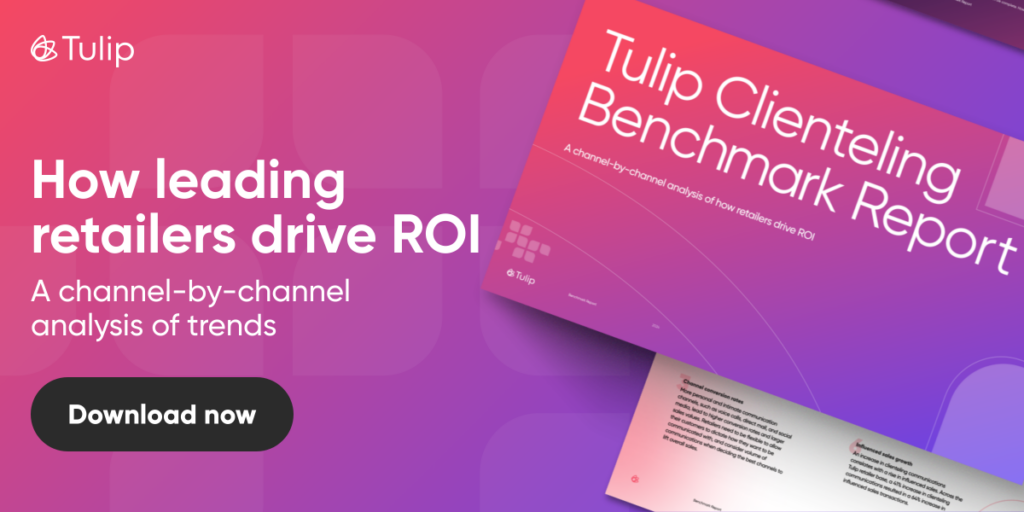“Omnichannel”… the word exists somewhere in the space between overused and maligned. It’s a wonky word used to describe some straightforward realities of the retail world: sometimes I want to interact and transact online, sometimes I want to interact and transact in person, and sometimes, I want to blend the two.
Most shopping journeys begin online and most still end inside a physical store, especially for categories like luxury, jewelry, beauty, furniture and fashion. It’s a logical path for me to go online to do some browsing, self-education and research, then decide I want to experience the product live before purchasing—whether that’s to see the product in person, try it, or maybe talk with an associate to answer any specific questions. I might buy it while I’m in the store or I might just leave, go online one last time to be sure that it’s what I want and buy it online. In fact, while browsing in a store I might see another product that piques my interest, go home and research it online, and following that, buy it online. The latter journey started in the store. As we can see from these two examples, there are many variations of the omnichannel journey.
I believe that there are some nuances that we need to acknowledge about these journeys. Some are initiated deliberately, but many start accidentally. Some require tons of research, others are impulse purchases, and other journeys fall somewhere in the middle. The organic nature of the shopper’s decision to move between the physical and digital world is a logical outgrowth of the benefits and limitations of each environment.
Regardless of journey variations, retailers who have a significant presence in both realms should use this to their advantage to meet the full spectrum of customers’ desires. Unfortunately, many retailers maintain a distinct wall between the two and even when they do try to operate both in a unified manner, there’s no consistency across channels and the linkage tends to be rudimentary at best. That leads to shopper frustration.
As a shopper, if I am freely sharing my information with you online, identifying myself when I visit your site—giving you nearly unfettered access to my shopping habits, likes and dislikes—I expect you to use that information to my benefit. That rarely happens.
Let’s consider a very common and often very frustrating real-life example, purchasing a new TV. Almost every TV manufacturer provides dozens of options: 4K vs HD, LED/LCD, scan rate, internet services, screen size, curved vs. straight; you can spend hours reading up on the differences between each brand, features and options. The journey often starts online to research and find the perfect fit. You spend an hour to get to a couple options that are on sale and seem to meet your needs. But you’re not 100% sure, so it’s off to the store you go to check them out… maybe to talk to an expert as well. You get to the store and continue your journey but quickly become overwhelmed by the selection and you can’t seem to find the exact models you looked at online. There’s one that looks similar and is on sale, but it wasn’t listed online, or was it? Time to find help…a store associate. Unfortunately, the journey takes a step back. The associate has no idea what you looked at online. Or what reviews you read that influenced your decision. Worse yet, they’re not even a product expert. You take out your phone in the aisle and go back online. The journey becomes laborious… worse yet…you finally find the model and it’s not in stock. The dreaded store visit with no purchase. If only the associate knew what you looked at and even if it was out of stock, was able to recommend a close equivalent.

It is this channel nexus that should enable traditional retailers to far eclipse the experience generated by their online pureplay competitors. They have access to all of the information gathered by any of the online players. They actually have more valuable data. If they make the effort, they can also collect all of the information about my previous in-store visits and purchases. Furthermore, they also have an invaluable asset in the form of a store associate who can guide you, ask questions to collect more decision criteria and use that context along with online data to make the perfect recommendation. In other words, there’s an opportunity to combine human insights with digital insights to deliver a more intimate and delightful shopping experience.
I am sure many of us tend to regard on-floor associates as an unimportant part of our journeys. Sometimes that is by design: I know what I want, I know where it is, so just stay out of my way. Other times it can be a lack of trust… you’ve dealt with too many associates that are not trained or empowered to provide the value they are capable of delivering. Do I want to explain myself and what I’ve been looking at to someone who’s probably less knowledgeable than me; or do I just want to figure it out myself?
If the associate, however, had access to my digital searches, my past purchases, and my likes (with my consent of course) and maybe even knew I was coming into the store at a certain time because I notified them of my intent, they would be in a position to join me in my journey without slowing me down and making me repeat it all for them. They would know where I’m at, and they could then guide me the rest of the way; delivering real value to me as a shopper and to the retailer at the same time.
It’s this two-way benefit flow that I find most powerful. A tech-enabled and informed sales associate can significantly elevate a shopper’s journey, regardless of where it started and where it is destined to end. By collecting a better contextual understanding of who I am and why I buy what I buy, retailers can deliver a much better overall experience for me over time—wherever I decide to interact and transact.
In my next post, I’ll explore what it takes to make this happen at the most basic level and where retailers can progress to take back the upper hand in the retailing world.
Until next time.
Read More: The Return of Intimacy in Retail – Part 3


